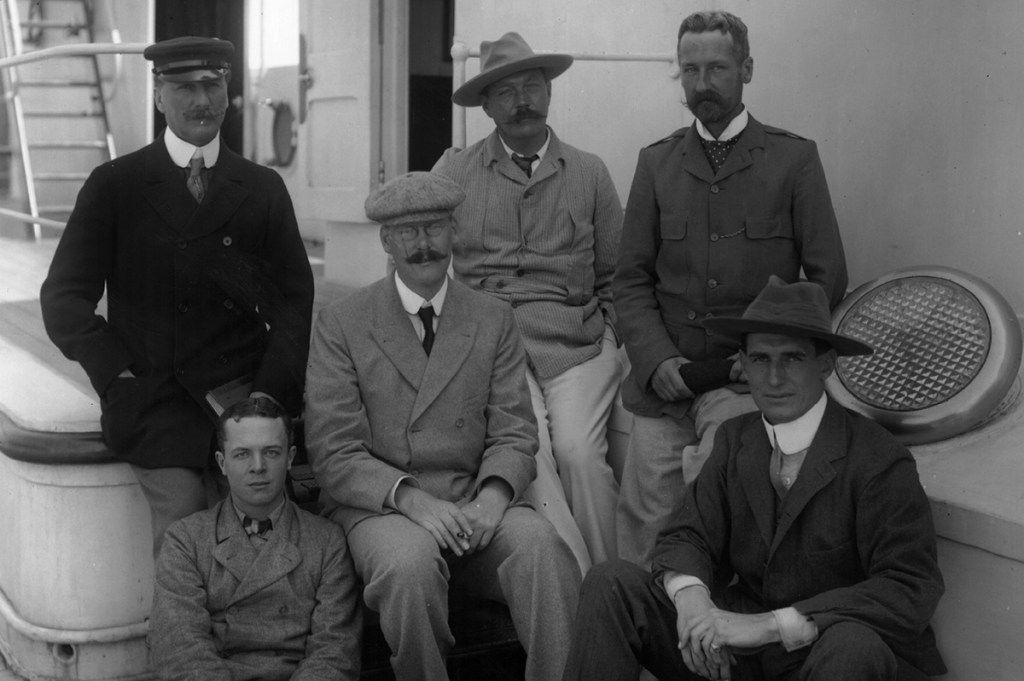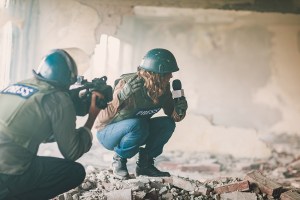What compelled three well-known British writers to leave their homes and travel 6,000 miles to participate in a nasty late-19th-century conflict in the far-off South African veldt? This question lies at the heart of Sarah LeFanu’s excellent analysis of how Rudyard Kipling, Mary Kingsley and Arthur Conan Doyle found themselves following the flag in Britain’s last great imperial war.
Her book starts with concise biographical introductions, up to the start of the Boer War in 1899. We get the familiar Kipling odyssey from Bombay, through fostering in the ‘House of Desolation’ in Southsea, to journalism in Lahore. Marriage took him to Vermont, where he started a family and fine-tuned his thinking on Britain and empire. After returning to England, he visited South Africa, which he saw as a tabula rasa for the style of colonial administration he had so admired in India. But his idyll was punctured by the tragic death in early 1899 of his beloved daughter Josephine, for whom he had written his Jungle Book stories.
Doyle, Kipling’s equal as a storyteller, though without his overall literary brilliance, grew up in straitened circumstances in Edinburgh, where his draftsman father was an alcoholic. After qualifying as a doctor and making his mark with Sherlock Holmes, his life, too, was blighted by personal problems — his wife Louise’s tuberculosis and his love for a younger woman, Jean Leckie.
Mary Kingsley is the least familiar of the three. A niece of Charles Kingsley, the author of The Water-Babies and Westward Ho! (a book now unread, but so popular in its day that it gave its name to the Devon town where Kipling was educated), she became famous as a traveler, ethnologist and campaigner for indigenous West Africans. She clashed with traditionalists such as Frederick Lugard, who later married the colonial editor of the Times of London, Flora Shaw. Kingsley responded that the best use she’d found for that paper was plugging holes in her canoe. She’d hoped to return home but, when the Boer War intervened, she signed up as a nurse.
The book’s middle section gives an excellent account of these hostilities, with a keen sense of local topography and the details of military action. Kipling and Doyle holed up (at different times) at the Friend, a propagandist newspaper in Bloemfontein. As thinking imperialists, both were horrified by the snobbish, racist culture of the British Army, which banned white soldiers from digging the latrines that might have prevented so many deaths from typhoid. Doyle, who had volunteered to fight but was deemed too old, reverted to his profession as a doctor. Kingsley served as a nurse in a prisoner-of-war camp in Simon’s Town, from where she regaled friends with typically wry anecdotes about her Boer inmates, before herself succumbing to all too prevalent disease. Kipling, a friend, responded with a moving poem, ‘Dirge of Dead Sisters’.
The book’s final part sees the remaining two through to their deaths in the 1930s. Both enjoyed strange literary renaissances — Kipling with his Puck of Pook’s Hill stories, Doyle by bringing Sherlock Holmes back to life. The former became entrenched in his imperialism, convinced of German perfidy; the latter moved in a different direction, befriending human-rights activists such as Roger Casement, before slipping into spiritualism.
LeFanu brings a fine critical sense to Kipling’s often overlooked South African output, explaining stories such as ‘The Captive’, in which he first referred to the war as a ‘dress-parade for Armageddon’. Generally, she admits, the standard of these was below par. He didn’t have the same empathy for black Africans as he’d had for the Indians of his youth. One reason, she feels, was his insensitivity to South African history.
Throughout, she provides insights into the writings of her subjects, giving biographical context, for example, to Doyle’s 1890 story ‘The Surgeon of Gaster Fell’, which touches on his uneasiness about his father, along with his family shame and fear of hereditary illness.
So why did all three cast off everything and make for South Africa? LeFanu points to their differing but compelling conceptions of public service, patriotism and imperial duty. Both men were traditional imperialists, while Mary Kingsley was more complex: prepared to take on the system over hut taxes in Sierra Leone but remaining an anti-suffragist, opposed to female political involvement.
They were all slightly outside the British establishment and eager to prove themselves — Kipling with his Indian origins, Doyle born in Scotland of Irish parentage and Kingsley through her gender. Finally, LeFanu suggests, they were fleeing private traumas — Kipling from his hurt at the death of Josephine, Doyle from the flak from his relationship with Jean, and Kingsley from the need to care for her mother, as well as rejection by a duplicitous admirer, Major Nathan.
There’s nothing startlingly new in this potpourri, but the mixture of well-digested detail and emotional understanding is pleasing. Like Kipling’s memoir Something of Myself, the limits of the exercise are signaled — and all the more intriguing for that.

























